Blog » How to Guides » HO’OPONOPONO: The Definitive Guide
HO’OPONOPONO
The Definitive Guide
Welcome to the definitive guide to Ho’oponopono. My guide will provide you with all the necessary information to incorporate the unique technique of Ho’oponopono effectively into your coaching practice.
So if you want to:
- Understand and master the concept behind Ho’oponopono
- Identify its benefits, uses, and limitations
- Expertly execute it to help your clients
- And make it a powerful tool in your coaching practice

Then you will love reading this comprehensive guide.
Let’s dive right in.
Don’t have time to read the whole guide right now?
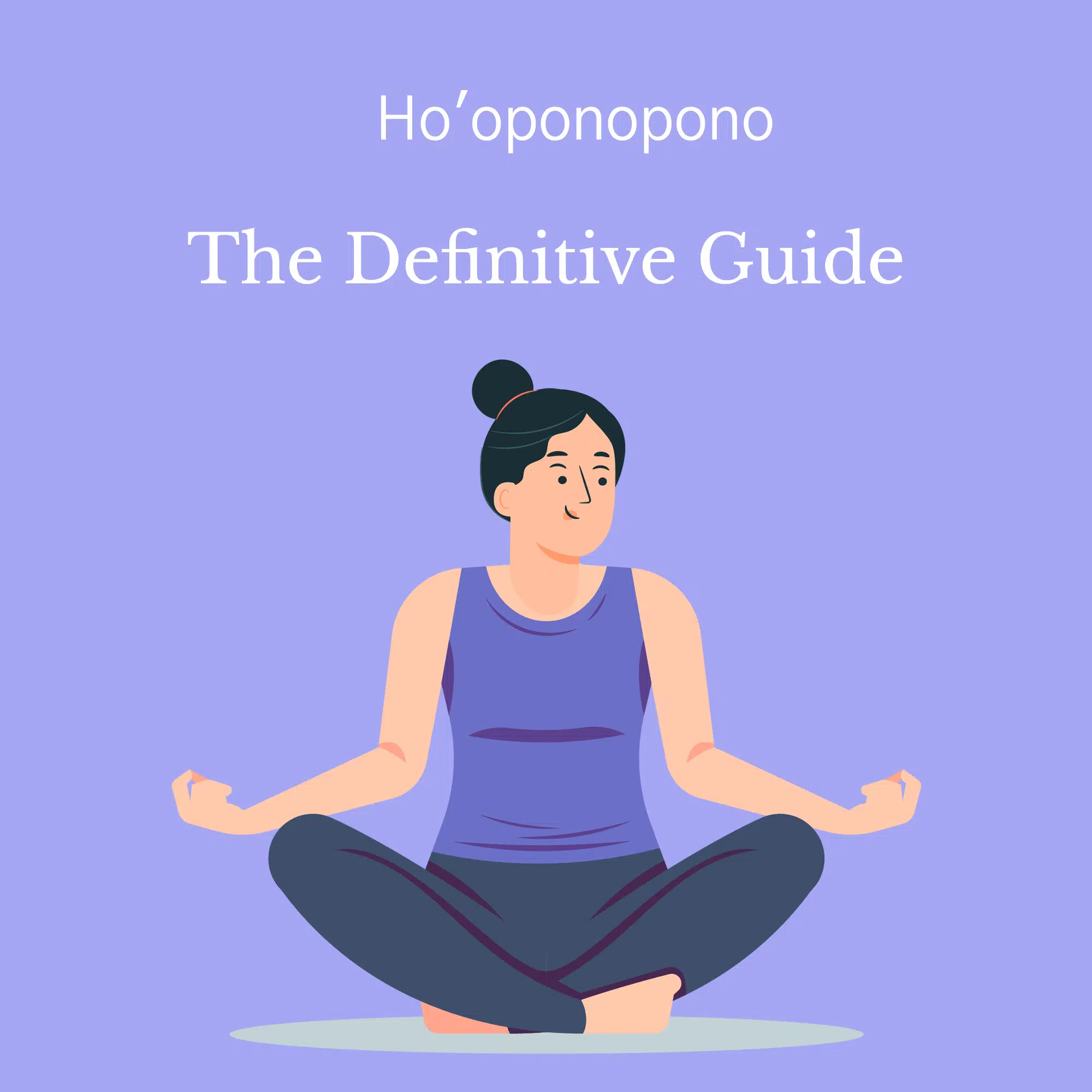
No worries. Let me send you a copy so you can read it when it’s convenient for you. Just let me know where to send it (takes 5 seconds)
Yes! Give me my PDFContents
CHAPTER 1:
The Fundamentals
In the first chapter of this definitive guide,
I will be covering the very basics of the Ho’oponopono, which will help you get a better grasp of the ancient and powerful practice..
The fundamentals include the definition of the tool and its etymology, its origin and ancient roots in Hawaiian culture, and the original philosophy behind the practice.

I will also be delving into the three minds of humankind, developed by Hawaiin psychology scholars.
What is the practice of Ho’oponopono?
Ho’oponopono, which roughly translates to ‘to make things right’, is an ancient Hawaiian practice of healing through forgiveness.
With a focus on reconciliation, pardoning, repentance, confession and, most importantly, acceptance, it advocates taking complete responsibility for the self and its environment.
The word comes from the participle ho’o (to make), which is converted into a verb when used with the noun pono (right). The double usage of pono in Ho’oponopono is symbolic of making things right twice over, i.e. with the self and others.
“Ho’oponopono means to cause to make right, to put things back into balance again,” explains Kumu Sabra Kauka, Hawaiian historian, educator, and activist, in the video below.
Where does it come from?
The healing practice of Ho’oponopono has its roots in Ancient Hawaii, which dates back to the period before the unification of the Kingdom of Hawaii in 1810.
The word ‘Ho’oponopono’ was not used back then, but the oral histories recorded from contemporary elders suggest that the same practice was used to resolve disputes between families.
Ho’oponopono in the Huna Culture
Huna, which means ‘secret’ in Hawaiian, is an age-old discipline of healing, enlightenment, energy and empowerment.
Ho’oponopono is an essential part of the Huna wisdom, wherein it’s important to resolve internal and external conflicts in order to move forward with one’s life.
The Original Philosophy
Ancient Hawaiians believed that breaking spiritual laws would cause illness in the person or family. Ho’oponopono, therefore, was originally meant to undo the wrongs in a person’s life, so that no harm would fall upon the self and the loved ones.
In its traditional practice, Ho’oponopono was conducted in the following scenarios-:
- Family feuds, in the presence of both the disputing parties (typically extended family members). Such situations were usually mediated with the help of a kahuna lapa’au or a shaman.
- To remove curses, and do away with dark forces.
- To clear the negative energies from conflicted land after bloody battles, which the people believed were filled with dark spirits.
The Three Minds of Humankind
Long before Sigmund Freud introduced the conscious and subconscious mind to the world of psychology, scholars in Hawaiian psychology had developed the concept of the three minds of humankind – The Conscious Mind (Uhane), Unconscious Mind (Unihipili), and Higher Conscious Mind (Aumakua).
They believed that these three minds were interconnected via Mana, the life-sustaining force of living creatures. Instead of a direct communication route between the Conscious Mind and the Higher Conscious Mind, the system states that the two can communicate with each other through two complex ways.
In the first method, the Unconscious mind acts as an indirect path, connecting the two extremes by allowing the transmission of Mana. In the second method, the Conscious Mind passes the messages to the Higher Conscious Mind by accessing Mana directly. Practices such as meditation allow people to alter their consciousness to achieve this interconnection.
By connecting our three minds, we become aware of our innermost residual energies, which can then be cleared up by the healing practice of Ho’oponopono.
CHAPTER 2:
The Power of Ho’oponopono in Various Walks of Life
Ho’oponopono has been hailed as a powerful tool by therapists and healing practitioners for countless years, and is a tool that life coaches too can benefit from incorporating into their practice.
In this chapter, I will chart out the areas of life that it can help deal with, and why it has proven to be such a beneficial and effective practice.

What does Ho’oponopono help with?
As mentioned before, Ho’oponopono is a practice of healing through forgiveness. It seeks to restore balance in your client’s life by undoing wrongs and letting go of negativity.
Let’s look at the various areas it can help with.
Forgiving Others
More often than not, you will encounter clients who have a hard time forgiving people for the hurt they have caused them. To understand the scope of Ho’oponopono in this category, let’s break down the various situations you can help your clients with through this practice.
- For feelings of pain or betrayal by loved ones, be it family, friends, or lovers.
- For misplaced anger or frustration for others.
- For conflicts and disagreements with colleagues at work.
- For struggles faced when dealing with teenagers or younger children.
- For feeling unimportant or unheard by others.
Self-forgiveness
Many times, the animosity your client carries arises not from the wrongdoings of others, but their own. Ho’oponopono allows for the opportunity to forgive the self and restore self-love by eliminating guilt, shame, and negative memories.
Self-comfort
Forgiving the self is a process, and it will not happen overnight. You can advise your client to practice Ho’oponopono for self-comfort during this process. They can make it a self-care ritual in their routine.
Here are a few situations in which it should be practiced:
- When they feel overwhelmed with negative thoughts or emotions
- When they feel burdened or disturbed after watching the news
- When they find themselves in situations that are preventing their growth, like talking behind someone’s back
- As a self-cleansing ritual before going to bed
Why does Ho’oponopono work?
There are various reasons why wellness practitioners swear by the age-old practice of Ho’oponopono.
Its effectiveness hinges upon four important factors-:
- First, it creates a natural transitional shift from blaming others for the pain caused to the individual, to taking complete responsibility for the actions and consequences, regardless of whose fault it was.
- Second, accepting responsibility kickstarts the healing process, allowing your client to begin moving on from things that were previously holding them back.
- Third, humans are social animals, and studies suggest that we like to feel valued by others. Ho’oponopono acts as a catalyst in this process of adding value to one’s self as well as the life of others.
- Fourth, through introspection, your client can begin to shed negative emotional baggage, making way for personal growth.
Scientific Research around Ho’oponopono
You might be wondering if there’s any scientific proof to back the practice of Ho’oponopono.
In this section, I have compiled the most important studies and research done by experts in the field to validate this powerful tool.
The Science behind Forgiveness
Research suggests that forgiveness is linked with better mental health and reduced stress and anxiety. It can also help improve physical health.
A study conducted by Matthew B. James, President of Kona University, explores the relationship between Ho’oponopono and forgiveness.
He included two groups; one which experienced the Ho’oponopono process, and one which didn’t. The research assessed the feelings of unforgiveness experienced by participants before using the process, right after, and then two weeks later.
Upon comparison, James concluded that the group that experienced the Ho’oponopono process showed more forgiveness compared to the other one.
Studies around Physiological Benefits
As mentioned above, forgiveness has been proven beneficial for our physical body.
In a study conducted by Kikikipa Kretzer, James Davis, David Easa, Julie Johnson, and Rosanne Harrigan, results indicated that Ho’oponopono may be an effective adjunctive therapy for hypertension, as it significantly reduced the mean blood pressure of the participants.
The findings of yet another research study conducted by Victor Christianto and Florentin Smarandache indicated that Ho’oponopono can boost human health and the immune system by leveraging the power of forgiveness.
Benefits of Ho’oponopono
As you have seen so far, Ho’oponopono is an efficient and beneficial tool for individuals and coaches.
But to fully realize its potential to heal clients, let’s look at some of its crucial benefits summarized here:
- It allows your client to deal with their emotions, especially negative ones, in a better manner
- It can help alleviate symptoms of depression and anxiety
- It can allow for a better understanding of the self, along with that of others
- It paves the way for a better future
- It is an effective mindfulness technique that helps soothe the mind.
All in all, as displayed by studies in the previous section, it improves mental and physical health.
CHAPTER 3:
A Step-by-Step Guide to Successfully Practicing Ho’oponopono
After learning about the history and effectiveness of Ho’oponopono, it’s time to explore how to use it efficiently and correctly as a coaching tool for your clients, which brings us to chapter three.
This chapter contains a step-by-step guide of actualizing the process of Ho’oponopono with your clients — but, first, let’s look at a few pre-steps, i.e. the setup for the activity.

The Setup
A pre-step before beginning the process of Ho’oponopono is to identify and analyze the person(s) your client wishes to resolve their conflict with.
These can be people they know, like their friends, family, colleagues, lovers or ex-lovers, or even people they don’t know personally, like a political leader or an internet troll.
The good thing is that you don’t need to assemble these people in the same physical environment as your client, as Ho’oponopono can be practiced from a distance. It simply requires your client to tune in with their deepest self and chant a prayer or a mantra.
Let’s now look at the four parts of the Ho’oponopono prayer.
Step One: Repentance – ‘I am sorry’
As I mentioned in Chapter 1, the Ho’oponopono process requires a person to take complete responsibility for everything in their mind, even when the cause of it exists outside them. Once you make your client understand this, they will be on the path to repentance and forgiveness.
In the beginning, it might be hard for them to take responsibility for things that seem “out there” or too big to be their fault; for example, global warming, the spread of Covid-19, etc.
But it’s important for you to encourage them to put their ego aside, and admit that they too have been a part of such problems.
But before you move on to such issues, you can tackle thoughts and problems that are more intrinsic to your client. For example, you can help them identify their bad habits or behaviors which may be causing them trouble in their life.
Are their poor eating habits leading to health issues? Are they self-destructive in relationships? Do they have an addiction to alcohol or other substances?
Begin here and encourage them to say ‘I am sorry’ out loud.
It would be even more powerful if they verbalize the extent of this problem by saying something like, “I understand that I am responsible for my low self-esteem, and it has caused me problems in my life. I repent that I have allowed it to stay within me for this long.”
Step Two: Forgiveness – ‘Please forgive me’
The forgiver is not the important element here – so don’t let your client fret about who they are asking forgiveness from.
Remind them of the problem they wish to set right, and ask them to say ‘please forgive me’ over and over until they start to feel the release of negativity from their conscience.
Step Three: Gratitude – ‘Thank you’
Expressing gratitude is an important part of this healing practice. Your client should thank whoever or whatever it is they just sought forgiveness from.
It could be the Universe, God, a relative, their own self, or an unknown person – it simply doesn’t matter. The crucial thing is to say ‘Thank you’ and chant it again and again.
Step Four: Love – ‘I love you’
Ho’oponopono borrows the power of love in this final step, in which your client must express their love for themselves and their surroundings to heal.
Motivate them to say ‘I love you’ to every element, seen or unseen.
They may express their love towards their body, their work, their sense of humor, the air they breathe, the food they eat, the loved ones they are blessed with, the Earth they live on – so on and so forth.
CHAPTER 4:
Advanced Coaching Tips to Maximize the Benefits of Ho’oponopono
Like any coaching tool, Ho’oponopono is only effective when practiced correctly.
This chapter contains some advanced tips to practice certain do’s and don’ts for you to follow and maximize the benefits of Ho’oponopono, without leaving room for error.

Do’s and Best Practices
Here are a few best practices to follow while conducting a Ho’oponopono session:
- Clearly explain and spell out the aim behind the process to your client. At first, they might find it counterintuitive to apologize to, and forgive, someone who has hurt them. Ensure that they understand that, in the long run, taking responsibility for the actions of others — and forgiving them — is for their own benefit.
- Make sure that they are open to the workings of the process. Be attentive and ease doubts and concerns as and when they arise. For your client to maximize its benefits, they need to believe in Ho’oponopono.
- Instead of chanting the prayer or mantra in their head, ask your client to say it out loud. Practitioners say that this leaves a deeper impact on the individual.
- Encourage your clients to revisit the practice of Ho’oponopono. You can either do this by scheduling follow-up sessions, or if your client is able and comfortable, by showing them how they can do it on their own.
Next up — what not to do while practicing Ho’oponopono.
Don’ts & Mistakes to Avoid
Just like the best practices enhance the final results of Ho’oponopono, certain mistakes can lead to limited success or even defeat the purpose of the exercise.
Here are the don’ts you should stay away from when performing this activity with your client:
- Don’t expect a miracle. As mentioned before, healing is not something that happens overnight. Manage your client’s expectations so that they are aware of the process, and the time it may take.
- Don’t let your client mistake forgiveness for total absolution. When forgiving the self or others, your client is not being asked to erase the ill-doing. Instead, they are simply acknowledging the event or feelings, and letting go of them, so that they can find balance in life.
- Don’t entertain negative thoughts and feelings, as and when they arise. It’s natural for your client to feel anger, frustration, and pain when revisiting bad memories, but you must encourage them to let these emotions go without dwelling on them too much.
CHAPTER 5:
Modern-Day Applications of Ho’oponopono
Being an ancient practice, you might — naturally — wonder if Ho’oponopono is relevant in the 21st century. In this chapter, I will demonstrate some of its most common practical applications fit for modern-day use.
These are not only limited to resolving conflict, but also extend to stress reduction, preventing burnout, and more. Let’s have a look.

Conflict Resolution
The most obvious and commonly found practical application of Ho’oponopono is to resolve conflicts between individuals and groups.
You can administer it for conflicts arising out of misunderstandings, miscommunication, and misdemeanors between family members, colleagues, friends, lovers, and anybody else your client may carry some negativity towards.
Preventing Burnout
The most obvious and commonly found practical application of We live in a day and age where burnouts are extremely common, be it in our professional, personal, or spiritual spheres.
To prevent energetic burnouts, your client must refrain from holding onto negativity.
Ho’oponopono acts as a great cleanser and helps your client clear their energy regularly, thereby preventing a burnout stage.
Self-realization
Practitioners believe that the ultimate purpose of this healing practice is to achieve self-realization, which is defined in Western psychology as, “Fulfillment by oneself of the possibilities of one’s character or personality.”
In the context of Ho’oponopono, it means to find Divinity within, so that people can cleanse their innermost selves daily. It allows your client to embark on the profound process of discovering their identity, and finding their place in the world.
Stress Relief
If your client is feeling stressed, it’s likely caused by an imbalance in their life.
By practicing Ho’oponopono with them, you can help them set things right by looking within. Over time, they will be able to reduce stress in their life as things begin to fall back into place.
Spiritual Meditation
Coined in a research paper by Amy Thakurdas, the term spiritual meditation has its roots in older versions of Ho’oponopono. It basically means that a conflict can be resolved between an individual and the Divine, without the presence of others.
The idea is to look within for answers, instead of searching them in the outside world. However, the job of a life coach, or therapist, is important in helping the client figure out their blind spots, so they can heal fully through the practice of Ho’oponopono.
CHAPTER 6:
Modern Adaptations & Variations of Ho’oponopono for Greater Relevance
Ho’oponopono has evolved many times over, which is why it continues to remain relevant in the present day.
In this chapter, I will discuss a few of the main modern-day adaptations and variations of the practice, which have been devised and taught by renowned academics and practitioners.

The Teachings of Morrnah Nalamaku Simeona
Recognized as a kahuna lapaʻau or healer in Hawaii, Morrnah Nalamaku Simeona devised an updated version of Ho’oponopono in 1976. She then introduced this to many parts of the world, through lectures in the United Nations and 14 countries.
Her teachings were influenced and inspired by her Christian education and philosophical studies about the developing world.
In her version of Ho’oponopono, she combined traditional Hawaiian traditions like praying to the Divine with concepts like karma. As a result, her teachings were focused on the growth of the self, rather than the group conflict resolution process in ancient Hawaiian rituals.
Several foundations and organizations were created to keep her work alive, and she wrote three books to document her research and work.
Ihaleakala Hew Len’s Impactful Work
It was Simeona’s former student, Ihaleakala Hew Len, who introduced the concept of Ho’oponopono as we know it in the current world. After her death in 1992, Len co-wrote a book called ‘Zero Limits’ along with Joe Vitale.
Len himself does not claim to be a healer or kahuna. His teachings are based on his philosophy and experience.
In addition to the prayer I took you through above, he coined the term ‘Self-I-Dentity thru Ho’oponopono’ in his book, which is based on the idea of taking total responsibility.
There’s an interesting story about how Len cured a whole ward of criminally ill patients in Hawaii State Hospital without actually meeting them. It is believed that he used Ho’oponopono to heal these patients and gave them a new lease on life.
The legend goes that he went through the files of the patients and chanted the mantra of ‘I’m sorry, please forgive me, thank you, and I love you’, which ultimately freed the patients from their shackles.
Instead of getting the patients to chant this prayer, he did it himself, believing that the only person he could control was himself. While the credibility of this story is yet to be established, it does offer us a glimpse into Len’s life and beliefs.
CHAPTER 7:
Useful Ho’oponopono Resources
As we have seen, Ho’oponopono is a powerful tool for your coaching practice but to use it effectively, it’s advisable to get your hands on as many useful resources as possible.
In this last chapter, I have compiled many such online and offline resources for you to use and incorporate into your practice.
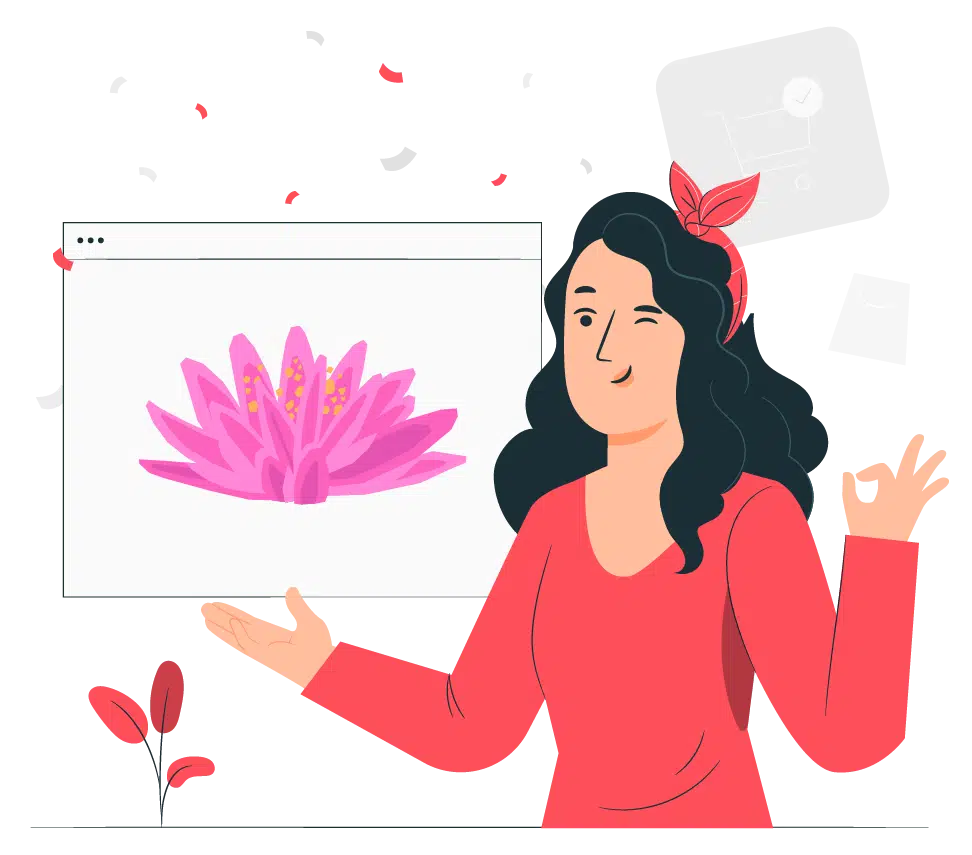
Online Classes and Lectures
It might be useful for you to dive deeper into the practice of Ho’oponopono by taking online courses or classes. You can also advise your clients to attend these, so that they gain a better understanding of the ritual.
Based on Len’s concept of ‘Self-I-Dentity thru Ho’oponopono’, you can find an organization offering dedicated classes and courses here. Udemy, too, offers an insightful course on the subject which you can find here.
Apps
We live in a tech-savvy world, and apps are a great way to connect with your clients, especially when you’re trying to show them the relevance of an ancient practice such as Ho’oponopono.
I recommend three such apps, Ho’oponopono, Ho’oponopono: Clean and Erase, and Hoopo. Through these, you can advise your client to practice regular sessions even in your absence.
Worksheets and Exercises
Worksheets are a great way to track progress and help your clients introspect whenever they get stuck. This simple worksheet developed by us will help your client understand what they are sorry for, what they are asking forgiveness for, what they are thankful for, and what they love about life.
It contains simple fill-in-the-blank exercises that your client can do in order to immerse themselves fully in the healing process.
Conclusion
Congratulations! You’ve made it to the end of the definitive guide to Ho’oponopono.
I’m thrilled to announce that you are now prepared to start using this powerful tool in your coaching practice.
I would love it if you could share your feedback on the guide, as well as your experience with Ho’oponopono whenever you get a chance to try it, in the comments below.
Frequently Asked Questions (FAQs)
What is the Ho Oponopono technique?
Ho’oponopono, which roughly translates to ‘to make things right’, is an ancient Hawaiian practice of healing through forgiveness.
What happens when you do Ho Oponopono?
It aids in the purification of the body and the removal of bad memories or emotions that keep the mind in a negative state in everyday life.
How do you use Ho Oponopono?
Ways to use Ho oponopono:
Step 1: Repentance – JUST SAY: I’M SORRY.
Step 2: Ask Forgiveness – SAY: PLEASE FORGIVE ME.
Step 3: Gratitude – SAY: THANK YOU.
Step 4: Love – SAY: I LOVE YOU.
How would you help a client with Ho Oponopono?
Let’s break down the various situations you can help your clients with through this practice.
1.For feelings of pain or betrayal by loved ones, be it family, friends, or lovers.
2.For misplaced anger or frustration for others.
3.For conflicts and disagreements with colleagues at work.
4.For struggles faced when dealing with teenagers or younger children.
5.For feeling unimportant or unheard by others.

Download a FREE PDF version of this guide…
PDF version contains all of the content and resources found in the above guide.


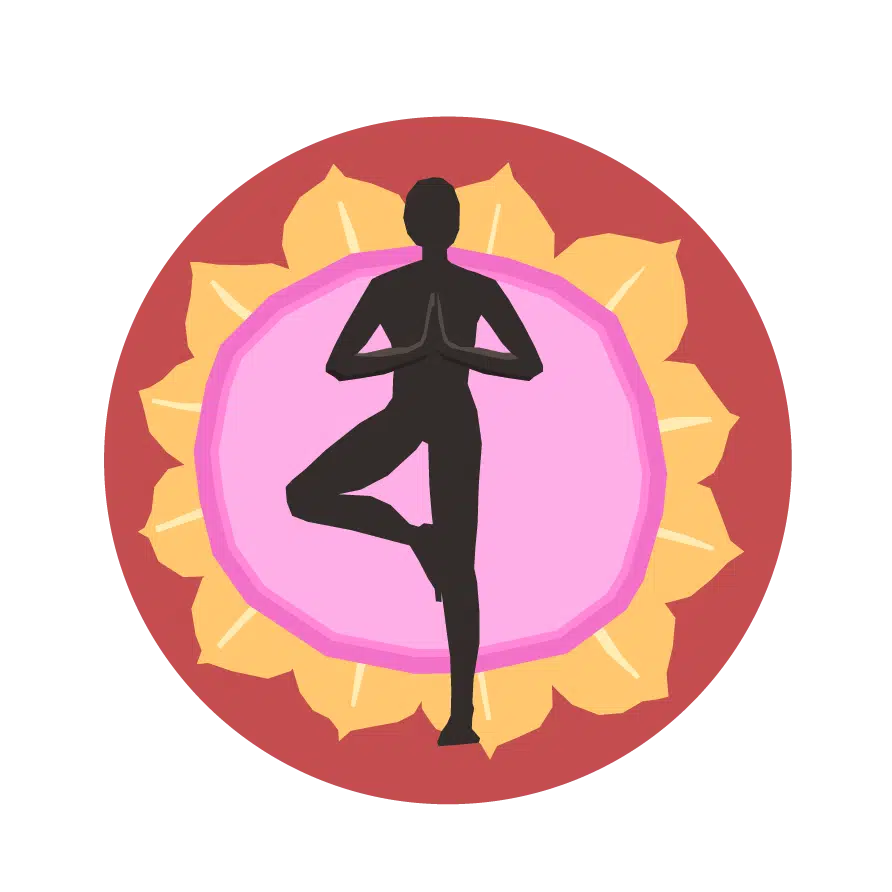


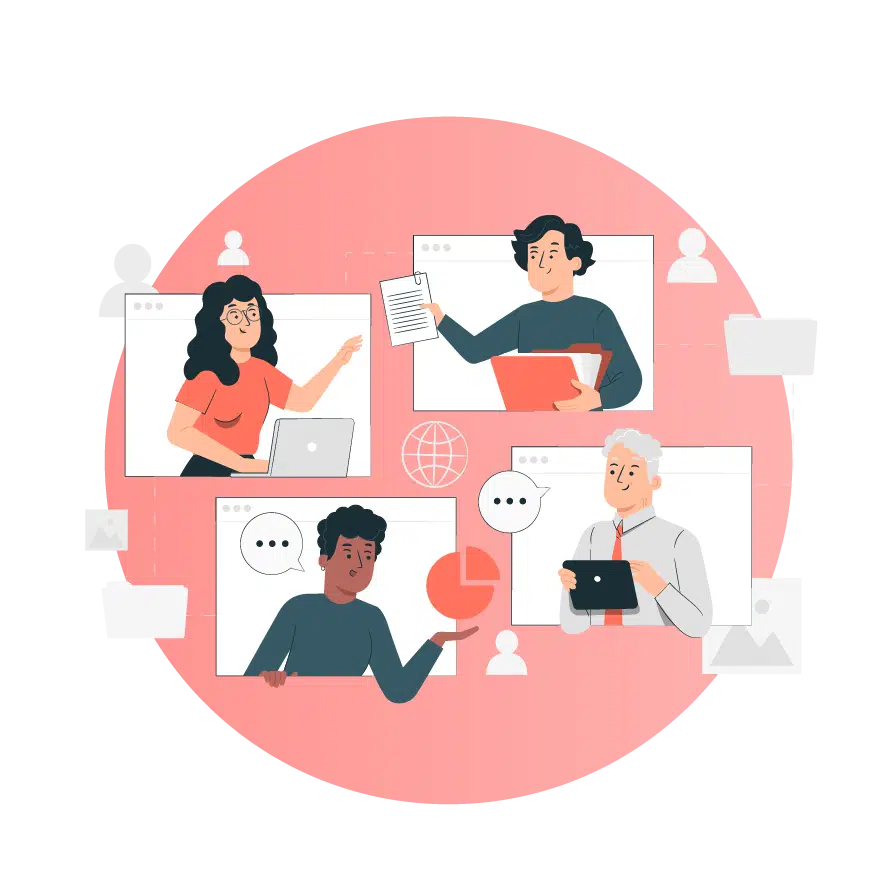




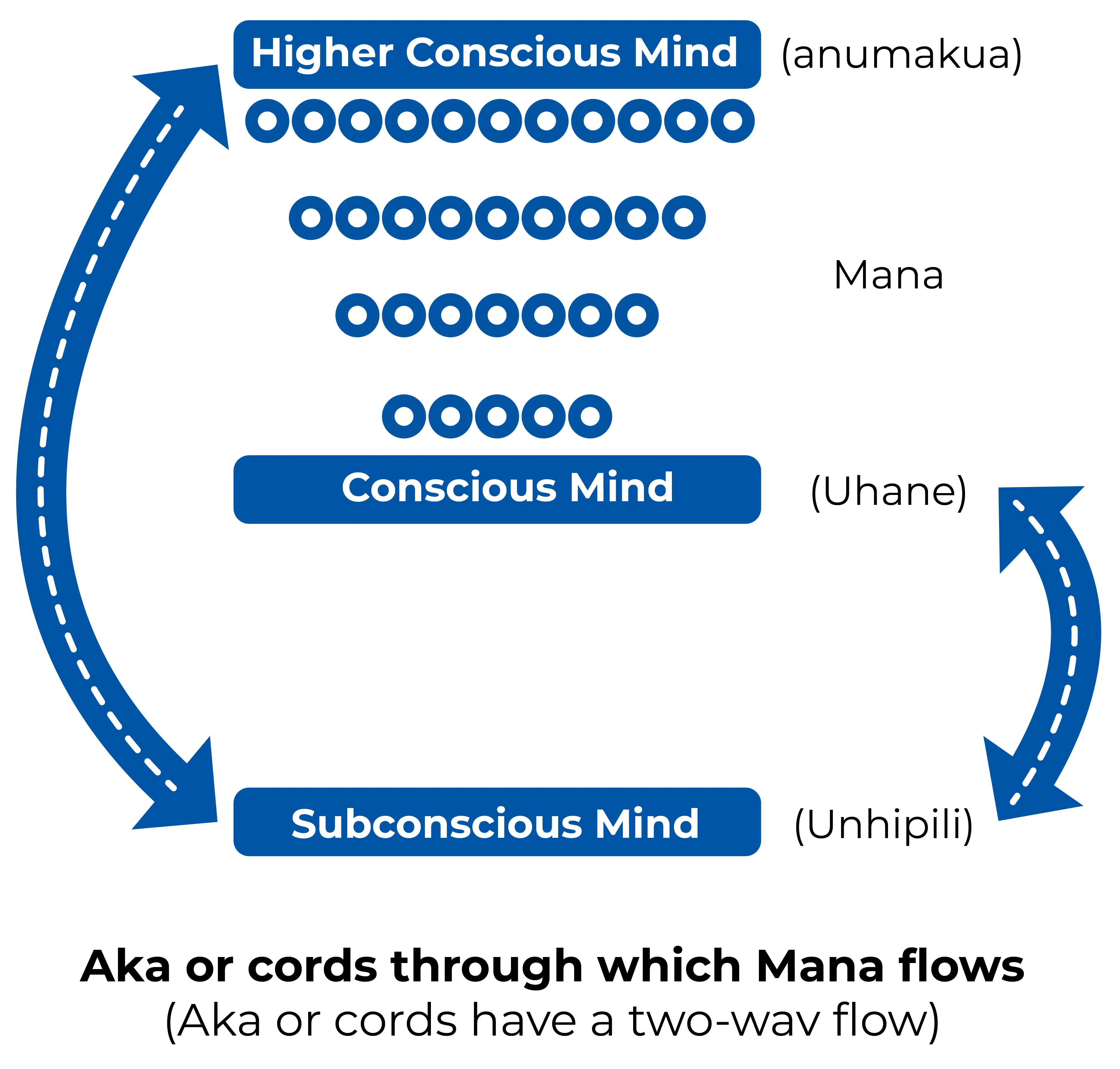
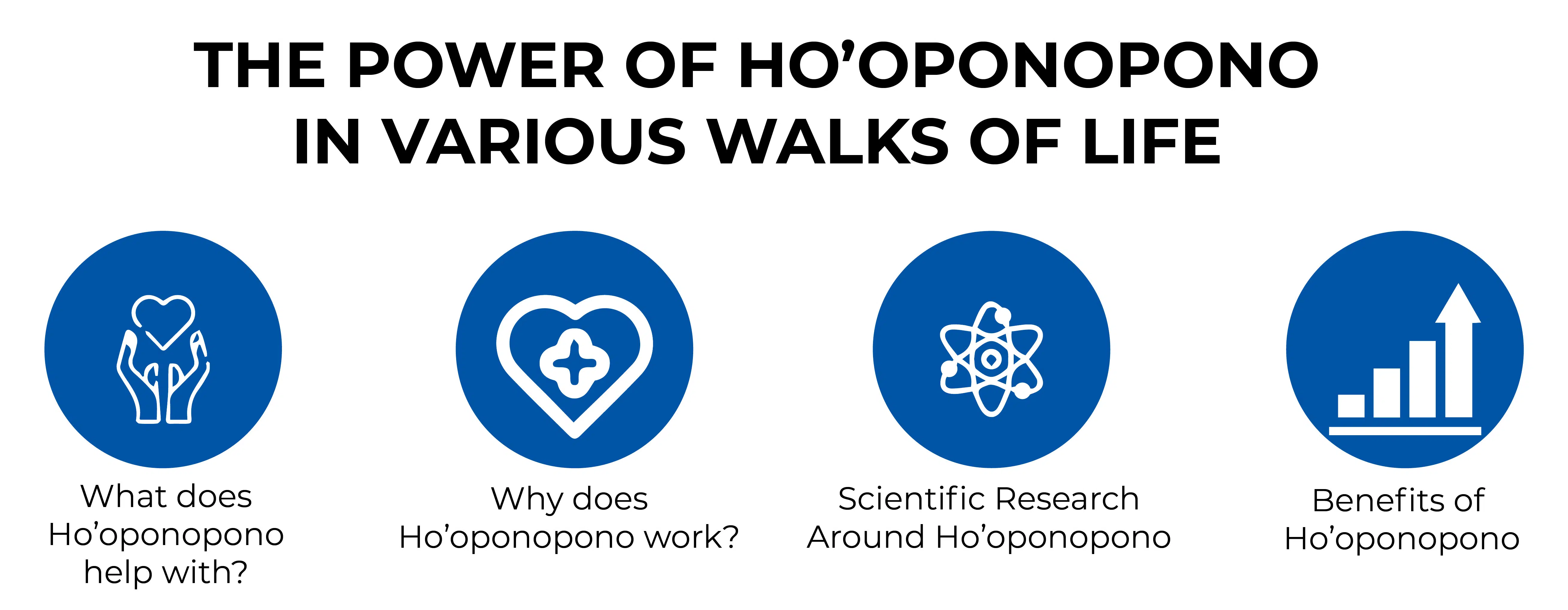


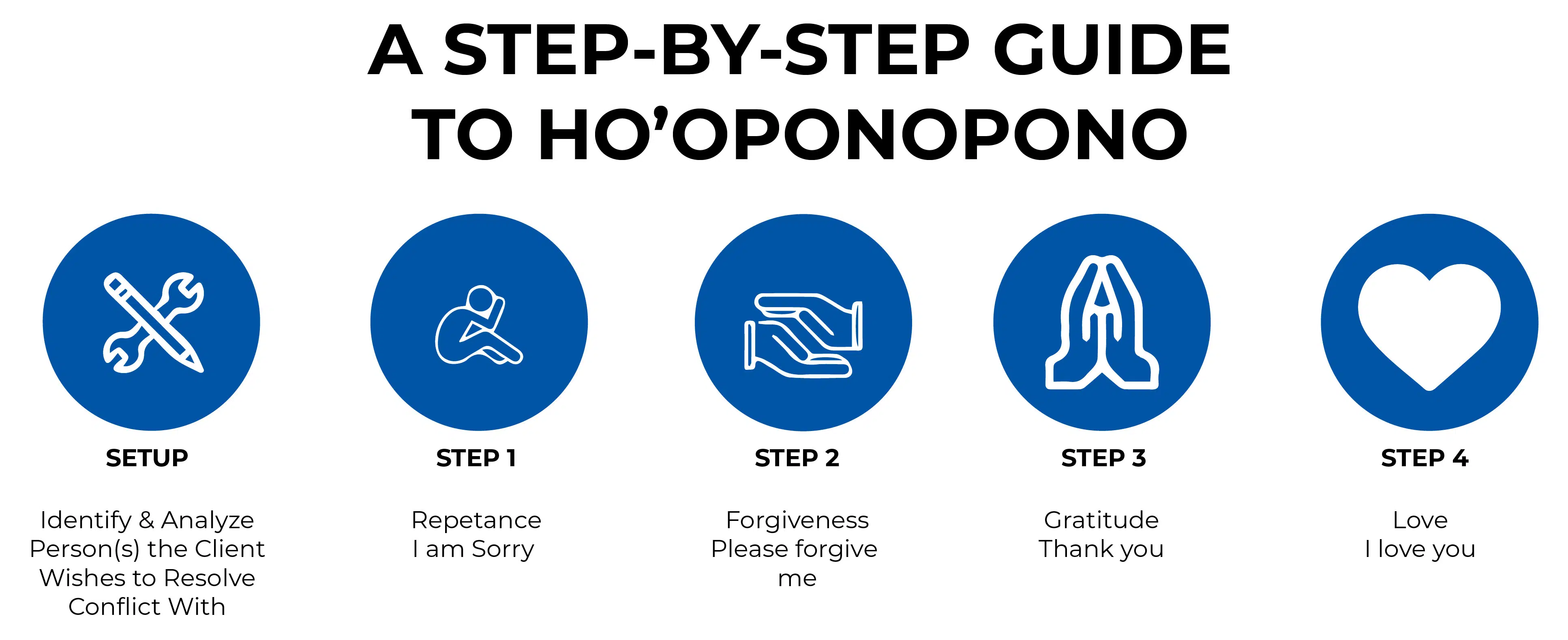
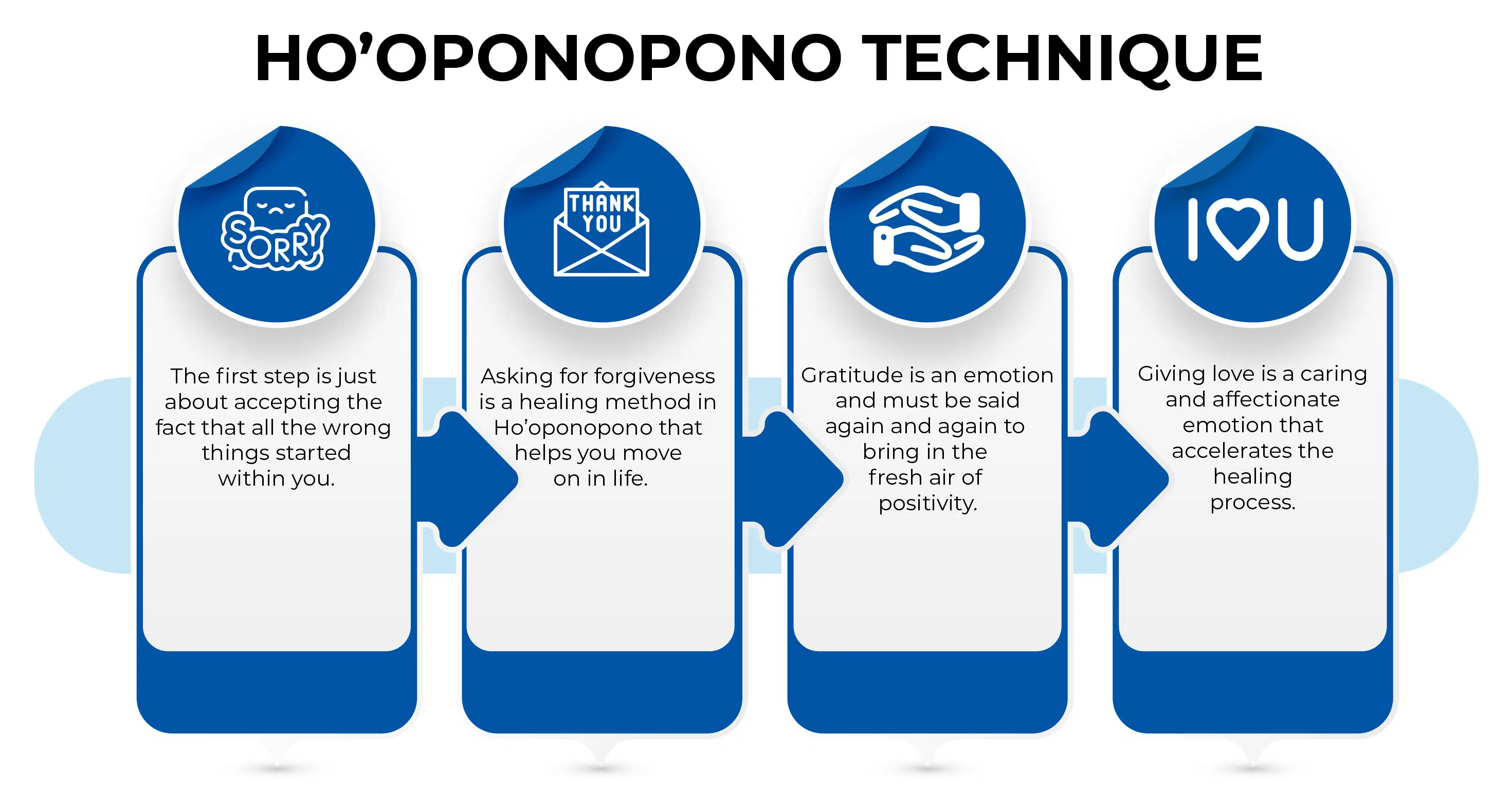
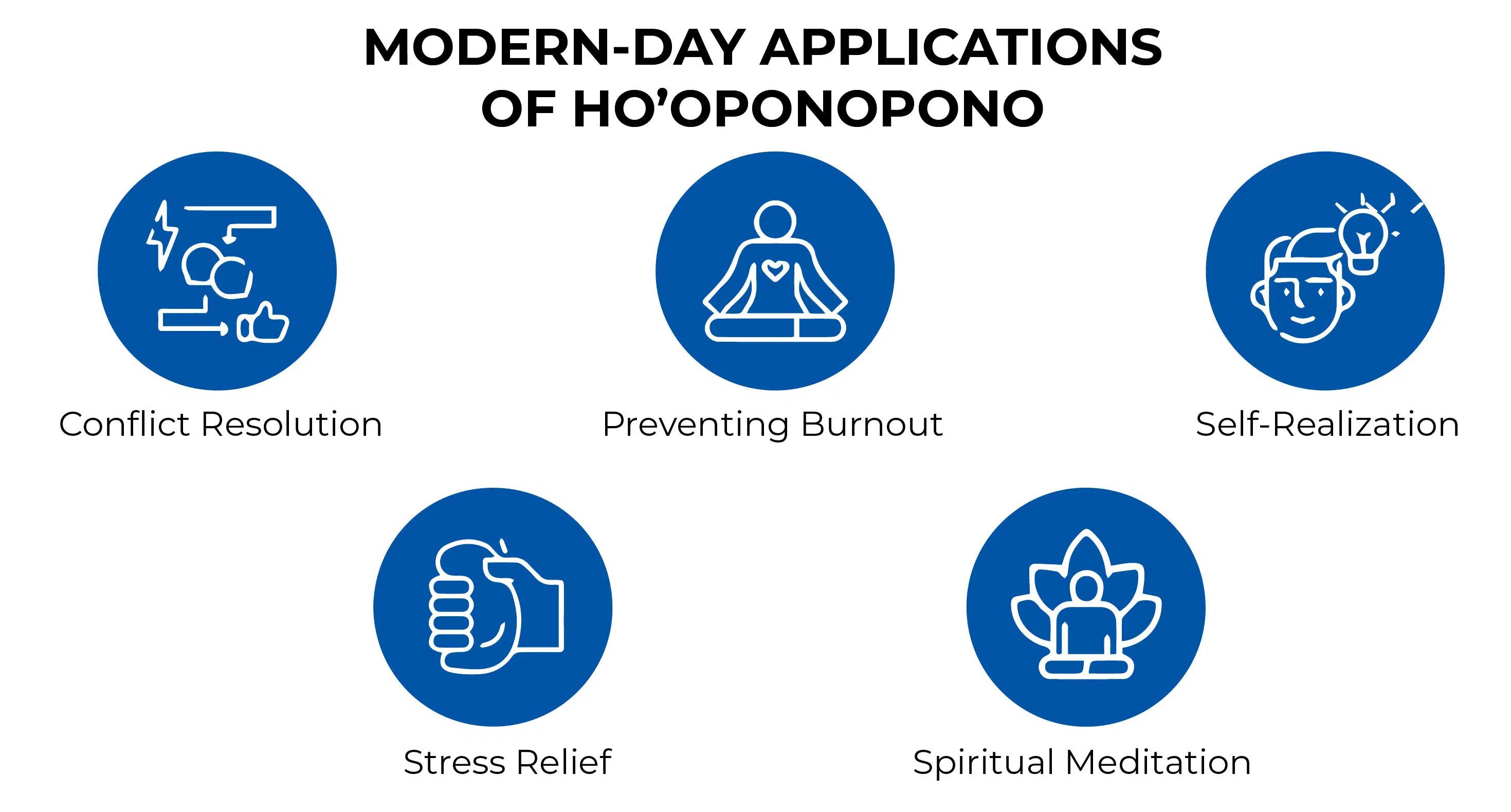
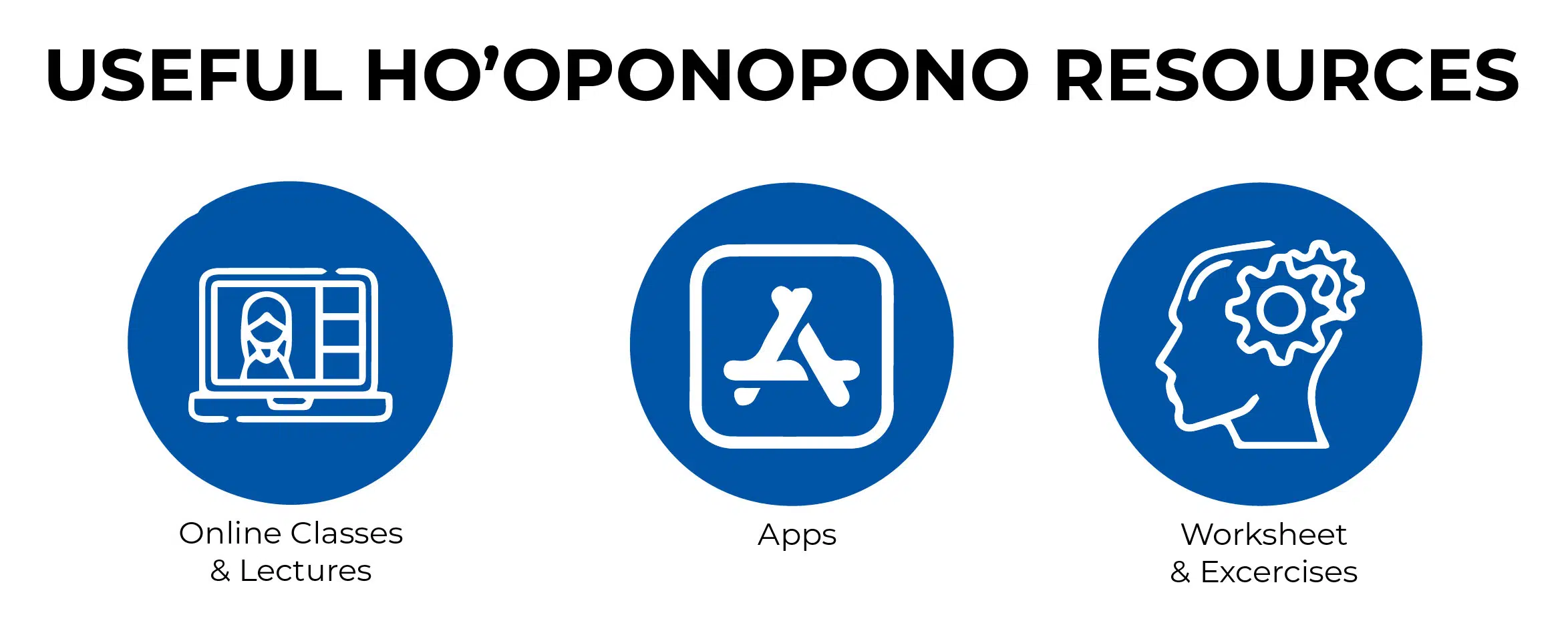





Thankyou so much. This is super helpful ………
good
Interesting article